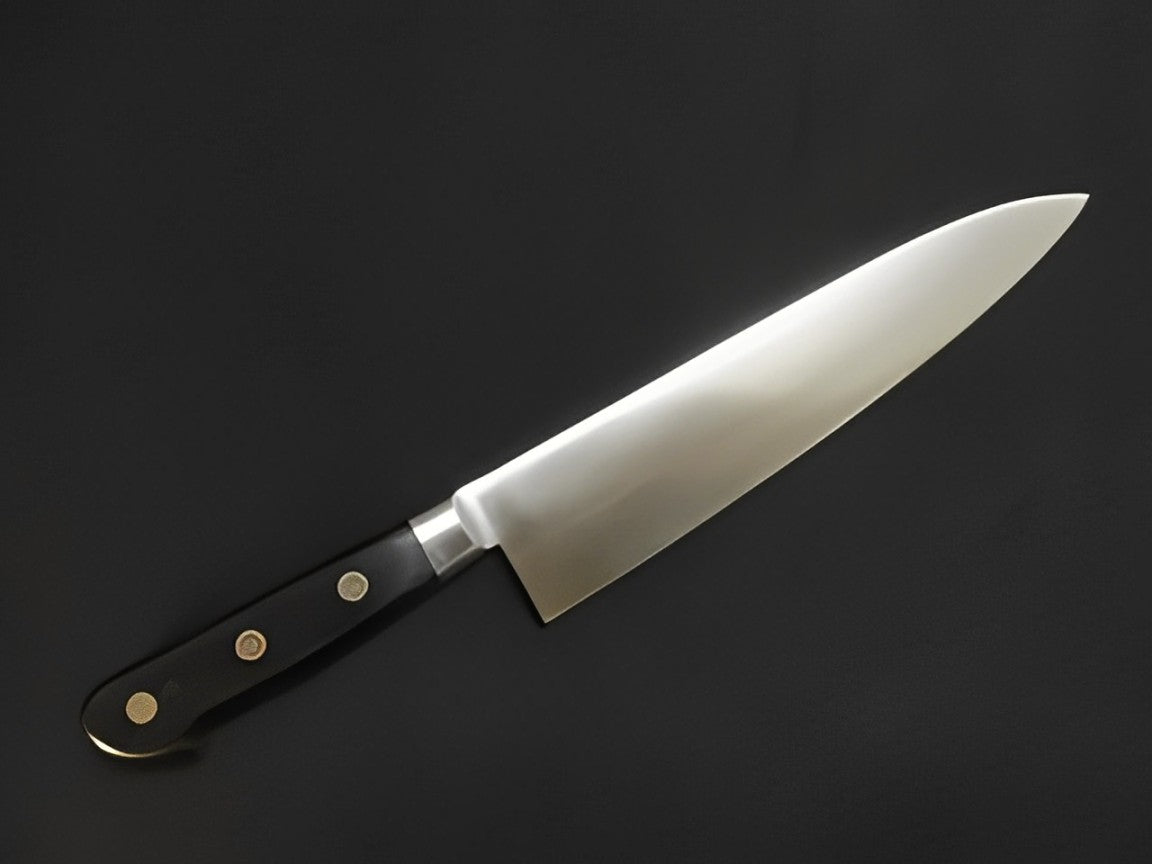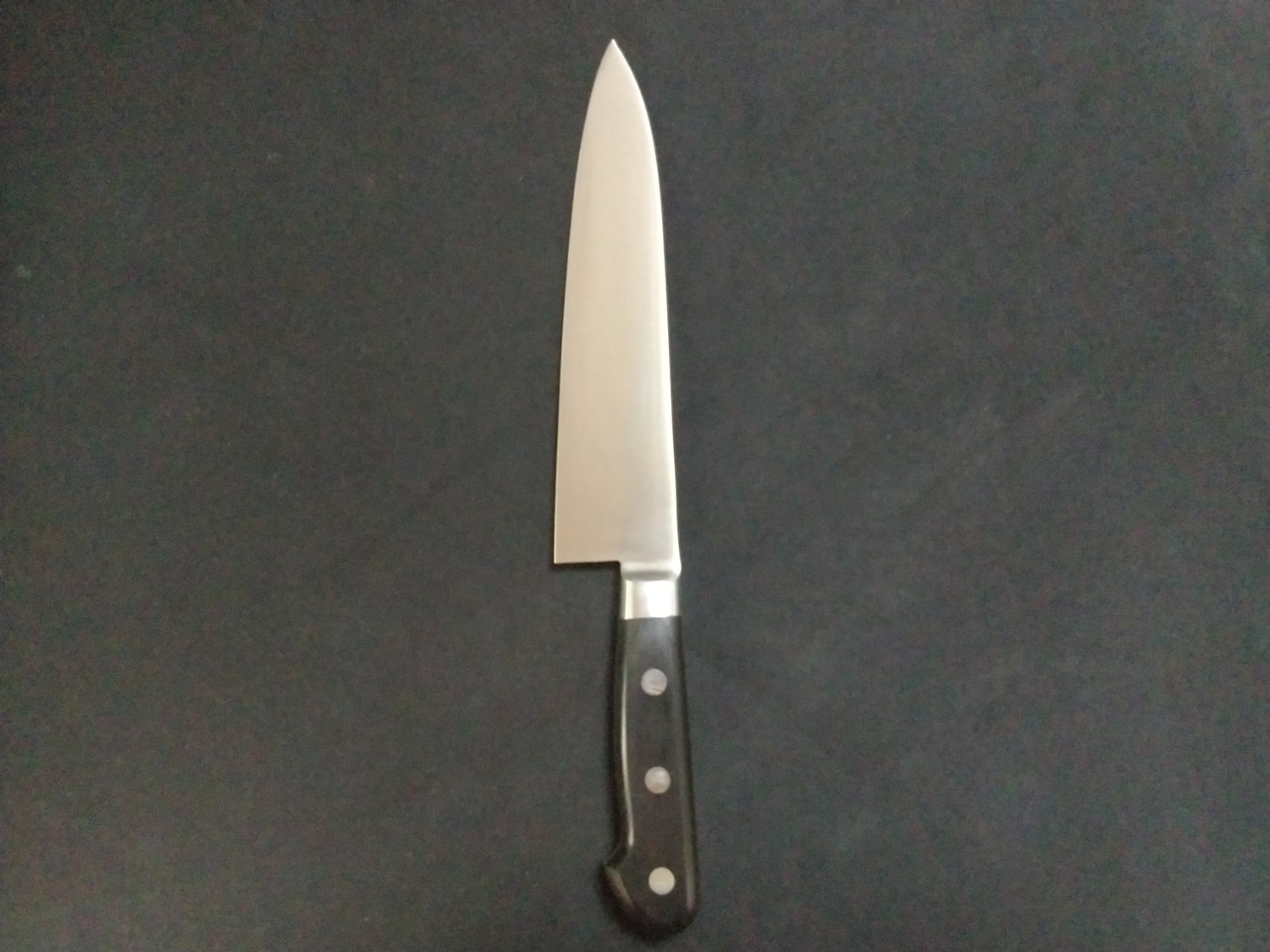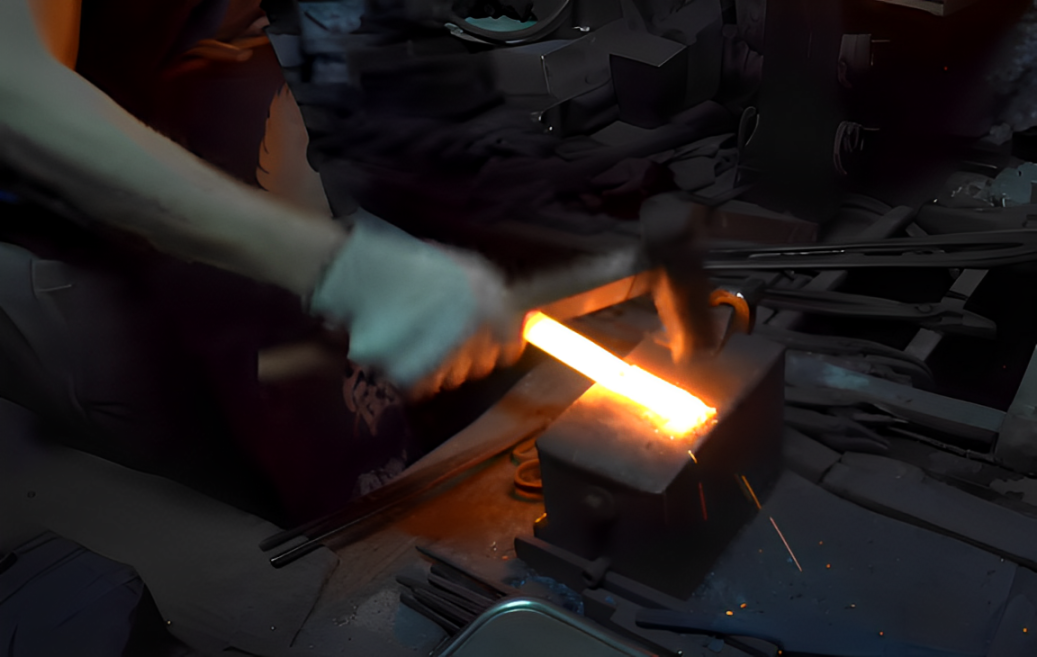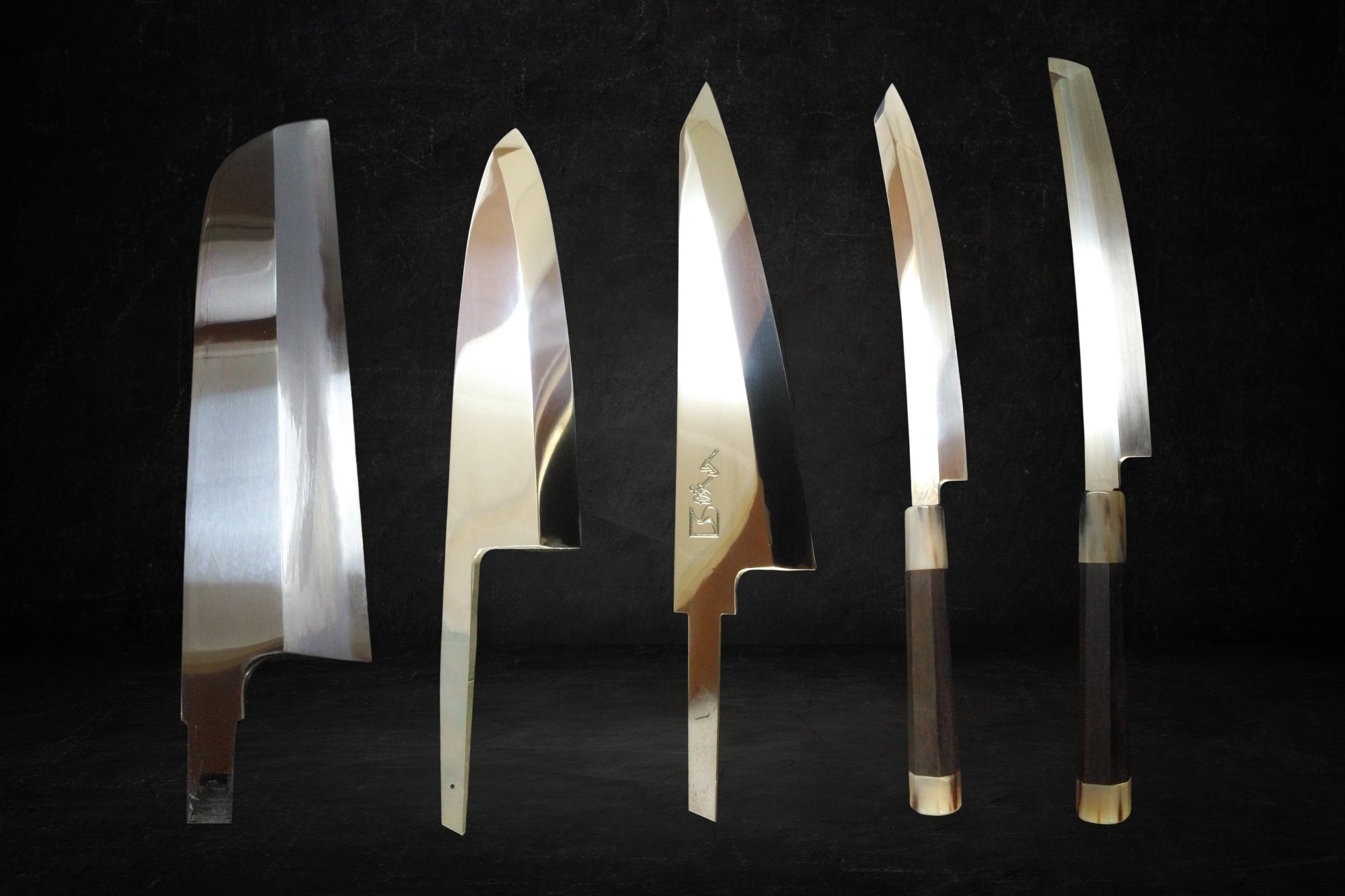
-
Unveiling the Gyuto: The Quintessential Japanese Chef's Knife
-
APRIL 15, 2023
-
The Gyuto stands as a testament to Japanese craftsmanship, offering unparalleled versatility in the kitchen, from precise meat slicing to delicate vegetable dicing.
-
Introduction to Gyuto
-
In the realm of culinary arts, the Gyuto stands out as a versatile and essential tool in kitchens around the world. Known for its exceptional adaptability, the Gyuto is cherished by professional chefs and home cooks alike. This guide aims to shed light on the unique qualities and applications of the Gyuto knife.
-

-
Understanding Gyuto: More Than Just a Meat Knife
-
Contrary to common belief, the Gyuto, often referred to as the "chef's knife" or "French knife," is not limited to meat cutting. Its name, translating to "beef sword," hints at its Western origins and meat-preparation capabilities.
However, its utility extends far beyond, making it an all-purpose knife suitable for fish, vegetables, and other ingredients. -
Key Features of Gyuto
-
- Sharp Tip:
The precision of the Gyuto's tip is invaluable for intricate tasks such as deboning meat or finely chopping vegetables. - Curved Cutting Edge:
The Gyuto's subtly curved edge is ideal for efficient slicing, dicing, and mincing, allowing for a smooth "rocking" motion during cutting. - Narrow Blade Width:
The slim profile of the Gyuto minimizes resistance, making slicing through ingredients effortless and preserving their texture. - Versatile Blade Lengths:
Available in lengths from 18cm to 27cm, the Gyuto caters to various cooking needs, from intricate garnishing to handling large cuts of meat.
- Sharp Tip:
-
Gyuto vs. Santoku
-
While the Gyuto is celebrated for its precision and versatility, it's often compared to the Santoku, another popular Japanese kitchen knife. The Santoku, known for its wider blade and shorter length, shares a similar range of applications with the Gyuto, making both knives excellent choices for diverse culinary tasks.
-
Caring for Your Gyuto
-
To maintain the Gyuto's exceptional performance:
- Hand Wash:
Clean with warm water and mild soap, avoiding abrasive materials that could damage the blade. - Regular Maintenance:
Keep the blade sharp and honed, utilizing a whetstone or professional sharpening services as needed.
- Hand Wash:
-
Choosing Your Ideal Vegetable Knife
-
When selecting a vegetable knife, consider the following:
- Shape and Use:
The knife's shape should align with your cooking style and the tasks you frequently perform. - Blade Width and Thickness:
A moderate width and thin blade facilitate easier vegetable cutting.
- Shape and Use:
-

-
Conclusion: A Culinary Staple
-
The Gyuto is more than a knife; it's a testament to the artistry of Japanese craftsmanship. Whether you're a seasoned chef or a culinary enthusiast, understanding and utilizing a Gyuto can significantly enhance your cooking experience, blending tradition with the multifaceted demands of modern cuisine.

Gyuto
The KIREAJI Gyuto collection page highlights the Gyuto knife, known as a chef's or French knife, essential for Western cuisine. Originating in the Meiji era with Japan's westernization, it's versatile for cutting meat, fish, and vegetables.

The Origin of Craftsmanship
-
Turning Every Challenge into Opportunity – The Craftsmanship Mindset
"Every situation, when viewed positively, becomes an opportunity; when viewed negatively, it becomes a crisis." This is something I have come to deeply understand over the years of forging knives.
-
There are times when things don’t go as planned while shaping a blade. The metal may not bend the way I want it to, or the heat may not be just right. However, each of these challenges is a crucial moment that tests and strengthens me. By remaining calm, thinking through the situation, and making adjustments, I move forward—and only then can I create a truly fine knife.
-
Through this craft, I have learned that even when a situation seems like a crisis, embracing it as an opportunity allows me to find new paths forward. This is the mindset I hold as a craftsman, and I believe it is the key to continuous growth.

Would you like to experience the sharpness of handcrafted knives from Sakai City, used by 98% of Japanese chefs?
Through our exclusive partnership with Shiroyama Knife Workshop, we bring you top-quality knives. In addition, we offer free Honbazuke sharpening, a protective Saya, and paid after-sales services to ensure long-term confidence.
KIREAJI's Three Promises to You
-

1. Exceptional Japanese Knives
Our knives, crafted by Sakai City's master artisans, combine traditional techniques with carefully selected materials, delivering unrivaled sharpness and durability.
-

2. For a Lifetime of Use
At KIREAJI, we see knives as lifelong companions. Each knife comes with a free saya, and we offer Honbazuke hand-sharpening by Shiroyama Knife Workshop in Sakai City.
-

3. Supporting the Joy of Continued Use
KIREAJI knives are made to grow with you. That’s why we provide trusted after-sales care (fee-based) .






